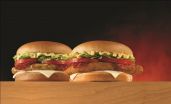(Press-News.org) CHAPEL HILL, N.C. – A team of researchers, including a number from the University of North Carolina at Chapel Hill School of Medicine, have pinpointed regions of the genome that contribute to the debilitating lung disease that is the hallmark of cystic fibrosis.
Their findings provide insight into the causes of the wide variation in lung disease severity experienced by CF patients. It also points the way to new diagnostic markers and therapeutic approaches for this and more common lung diseases such as COPD.
This study, which appears online Sunday, May 22, 2011 in the journal Nature Genetics, is among the first reported genome-wide scans of a single gene disorder. It was the work of the North America CF Gene Modifier Consortium, which brought together dozens of investigators from the United States and Canada to identify which regions of the genome are associated with lung disease severity in almost 3,500 CF patients.
"This cystic fibrosis discovery showcases the valuable information that can be obtained when scientists work together on genome wide association studies," said Susan B. Shurin, MD, acting director of the NHLBI. "Now we are closer to understanding why patients with the exact same genetic mutation in the cystic fibrosis gene have such widely varying manifestations of lung disease, and closer to finding new therapies."
CF is a genetic disease that causes the lungs to clog up with thick, sticky mucus that is prone to infection. Though every CF patient carries mutations in both copies of the same gene – coding for a protein called cystic fibrosis transmembrane conductance regulator or CFTR – symptoms can vary widely from patient to patient. For instance, some patients can have such severe lung disease that they are near death at the age of 10, whereas others can have nearly normal lung function at the age of 35.
"There is very good reason to believe that what we have discovered in CF lung disease could apply to other diseases as well," said one of the senior study authors Michael Knowles, MD, professor of pulmonary and critical care medicine at UNC. "Just as an example, a previous study of our Consortium, led by Scott Blackman MD, PhD, uncovered a gene called TCF7L2 associated with diabetes in CF patients. Genetic variation in TCF7L2 is the strongest common genetic variant associated with risk for type 2 diabetes in the general population."
For the last decade, Knowles and his colleagues have been searching for other genetic factors that modify the effects of the disease-causing mutations in the CFTR gene, improving or exacerbating the disease as it unfolds. One way they have looked for these potential "genetic modifiers," has been through a candidate gene approach, methodically hand-picking their most likely candidates from the 20,000-some genes in the human genome. But that approach could be missing some key players.
"Going after those candidate genes means relying on past basic and clinical data, and in some cases chasing ghosts and half-truths," said lead study author Fred Wright, PhD, professor of biostatistics at UNC. "But when you step back and scan the entire genome, it is an unbiased look at what is there. In fact, both of the most significant genome-wide regions that we uncovered in this study are not ones that we would have necessarily predicted."
Genome-wide association studies use "genechip" technology to identify genetic variants (single gene polymorphisms or "SNPs") that could explain differences in health between individuals. The Consortium tested DNA from 2,464 CF patients, and then replicated their findings in another of 973 patients. They also performed a separate genome-wide linkage scan, which looks at how gene variants are inherited through multiple affected families. All of their results pointed to the same two regions of the genome, one on chromosome 11 and one on chromosome 20.
Members of the consortium have now divvied up these chromosomal hotspots and are trying to understand how variants in these regions could underlie CF progression. For his part, Knowles plans to focus on chromosome 11, which contains genes relevant to airway cell function.
"The great expectation is that once we have a handle on a few key genes that contribute to the variation we see in the clinic then we have a great starting point to find mechanisms and biological pathways that may make good targets for treating lung disease," said Wright.
###
Study co-authors from UNC include Clayton W. Commander, PhD; Ethan M. Lange, PhD; Seunggeun Lee, PhD; Jingchun Luo, MD, MS; Gregory M. Mayhew, MS; Wanda K O'Neal, PhD, Rhonda G. Pace, Jaclyn R. Stonebraker, PhD; Wei Sun, PhD; and Fei Zou, PhD. Other key authors are Garry Cutting, MD, co-corresponding author from Johns Hopkins University; Mitchell Drumm, PhD, from Case Western Reserve University; and Peter Durie, MD, from the University of Toronto.
The UNC research was funded by the National Heart, Lung and Blood Institute, a component of the National Institutes of Health, and the Cystic Fibrosis Foundation.
Consortium identifies genome regions that could influence severity of cystic fibrosis
2011-05-23
ELSE PRESS RELEASES FROM THIS DATE:
Quit Tea Natural Stop Smoking Aid Receives Professional Recommendations
2011-05-23
Quit Tea, the natural stop smoking aid, has received an official professional endorsement. "This is a good product I will continue to tell my clients about," says Leeanne Taylor, a licensed drug and alcohol counselor with a private practice in Bangor, Maine, who specializes in smoking cessation.
Ms. Taylor received free samples of Quit Tea as part of the Quit Tea LLC's local Maine smoking cessation professional detailing program. She said "since that time I have given clients a tea bag and the website so they could get some of their own. The majority of ...
Just 4 percent of galaxies have neighbors like the Milky Way
2011-05-23
How unique is the Milky Way?
To find out, a group of researchers led by Stanford University astrophysicist Risa Wechsler compared the Milky Way to similar galaxies and found that just four percent are like the galaxy Earth calls home.
"We are interested in how the Milky Way fits into the broader context of the universe", said Wechsler. "This research helps us understand whether our galaxy is typical or not, and may provide clues to its formation history."
The research team compared the Milky Way to similar galaxies in terms of luminosity--a measure of how much light ...
Common Jupiters?
2011-05-23
Freelance writer Robert Brault offers a metaphor for the night sky, "A trillion asterisks and no explanations." By supporting astronomers, the National Science Foundation (NSF) helps to provide explanations. A recent NSF- and NASA-funded study provides one more explanation.
Astronomers have discovered a new population of Jupiter-size planets floating alone in the dark of space, away from the light of a star. According to the scientists, these lone worlds were probably ejected from developing planetary systems.
The discovery is based on a joint Japan-New Zealand survey, ...
Mount Sinai researchers discover possible new target for sarcoma treatment and prevention
2011-05-23
Researchers from Mount Sinai School of Medicine have discovered a protein signaling pathway that becomes hyperactivated in human sarcoma cells, suggesting that medications to inhibit this pathway may be effective in the treatment of human sarcomas. The research is published in the current issue of the journal Cancer Cell.
A team of researchers led by Stuart Aaronson, MD, Jack and Jane B. Aron Professor and Chairman of the Department of Oncological Sciences at Mount Sinai School of Medicine, compared normal human mesenchymal stem cells to human sarcoma cells and found ...
American Community Television Calls on AT&T to Make PEG Channels Available to the Blind and Vision Impaired Community
2011-05-23
American Community Television (ACT) sent letters last Thursday to Randall Stephenson, the President of AT&T, and to Jacquelyn Brand, the chair of the AT&T Advisory Panel on Access & Aging, asking that AT&T deliver Public, Educational and Government (PEG) access channels the same as all other channels on the U-Verse system.
"AT&T's U-Verse platform discriminates against persons who are blind or visually impaired," said John Rocco, President of ACT. "We cannot access PEG channels through the Channel 99 on-screen menu."
Mr. Rocco, ...
Replacing the blue bloods
2011-05-23
The Food and Drug Administration requires every drug they certify to be tested for certain poisons that damage patient health. The current gold standard for this is the limulus amoebocyte lysate (LAL) assay that involves using the blood of horseshoe crabs, which strangely enough is blue, to test for endotoxin, a substance commonly associated with many symptoms caused by bacterial infections.
But researchers at the Department of Chemical and Biological Engineering at the University of Wisconsin-Madison have found what may be a more effective way to test for endotoxin that ...
Novel man-made material could facilitate wireless power
2011-05-23
DURHAM, N.C. – Electrical engineers at Duke University have determined that unique man-made materials should theoretically make it possible to improve the power transfer to small devices, such as laptops or cell phones, or ultimately to larger ones, such as cars or elevators, without wires.
This advance is made possible by the recent ability to fabricate exotic composite materials known as metamaterials, which are not so much a single substance, but an entire man-made structure that can be engineered to exhibit properties not readily found in nature. In fact, the metamaterial ...
Whataburger Introduces New Honey Mustard Chicken Club Sandwich
2011-05-23
Just in time for summer, Whataburger today announced the Honey Mustard Chicken Club, its newest menu item available for a limited time only. The new chicken sandwich - with a choice of grilled or crispy chicken -- is available Monday, May 23 at 3 p.m. through Monday, June 27 at Whataburger's 700-plus locations across 10 states.
The made-to-order Honey Mustard Chicken Club sandwich features a choice of Grilled Chicken or Whatachick'n filet, freshly chopped lettuce, tomato, bacon, Swiss American cheese and Honey Mustard sauce on a wheat bun. It is the newest addition to ...
USDA/AIA survey reports 2010/2011 winter honey bee losses
2011-05-23
This release is available in Spanish.
WASHINGTON - Total losses from managed honey bee colonies nationwide were 30 percent from all causes for the 2010/2011 winter, according to the annual survey conducted by the U.S. Department of Agriculture (USDA) and the Apiary Inspectors of America (AIA).
This is roughly similar to total losses reported in similar surveys done in the four previous years: 34 percent for the 2009/2010 winter, 29 percent for 2008/2009; 36 percent for 2007/2008, and 32 percent for 2006/2007.
"The lack of increase in losses is marginally encouraging ...
World record in ultra-rapid data transmission
2011-05-23
This release is available in German.
Scientists of Karlsruhe Institute of Technology (KIT) have suc-ceeded in encoding data at a rate of 26 terabits per second on a single laser beam, transmitting them over a distance of 50 km, and decoding them successfully. This is the largest data volume ever transported on a laser beam. The process developed by KIT allows to transmit the contents of 700 DVDs in one second only. The renowned journal "Nature Photonics" reports about this success in its latest issue (DOI: 10.1038/NPHOTON.2011.74).
With this experiment, the KIT scientists ...







